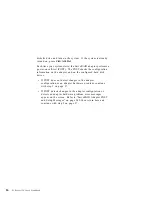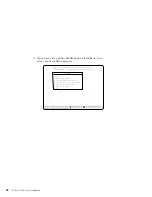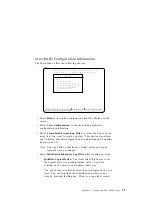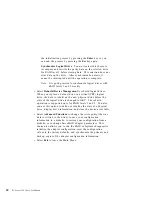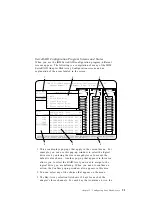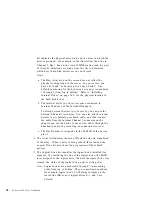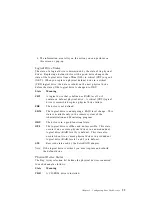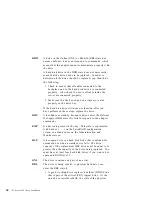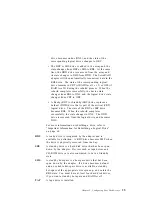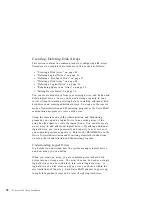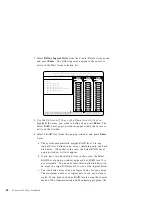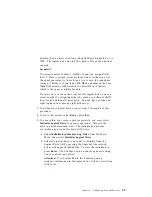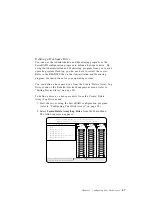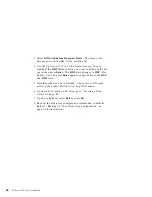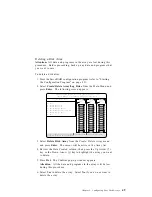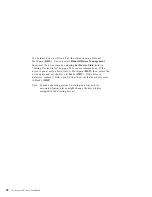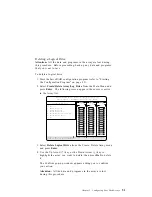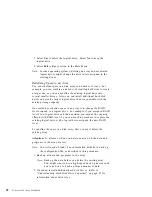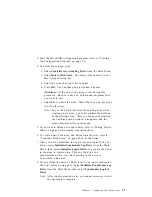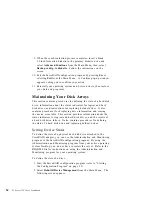
Each array can be formed from a maximum of 8 or 16 drives. An
array can span all channels.
Note: When the strip unit size is 8 K or 16 K, the maximum
number of physical drives in an array is 16. When the strip
unit size is 32 K or 64 K, the maximum number of physical
drives in an array is eight.
Understanding Hard Disk Drive Capacities
It is important to understand the implications of hard disk drive
capacities and how they influence the way you create disk arrays.
Although the drives in the disk array can be of different capacities
(for example 1 GB or 2 GB), they are treated in the disk array
configuration as if they all have the same capacity, that is, the
capacity of the smallest disk drive. Therefore, if you have four
drives of 1 GB, 1 GB, 1 GB, and 2 GB grouped in one disk array, the
total capacity of the array is 1 GB times 4, or 4 GB (instead of the 5
GB physically available).
Notes:
1. With RAID level 0, the total capacity of the array without
protection would be 4 GB. With RAID level 1 protection, the
usable data capacity would be 2 GB. With RAID level 5
protection, the usable data capacity would be 3 GB.
2. When referring to hard-disk-drive capacity, GB means
1 000 000 000 bytes; total user-accessible capacity may vary
depending on operating environment.
Chapter 2. Configuring Your Disk Arrays
39
Summary of Contents for PC Server 330
Page 1: ...PC Server 330 User s Handbook IBM...
Page 6: ...vi PC Server 330 User s Handbook...
Page 10: ...x PC Server 330 User s Handbook...
Page 32: ...18 PC Server 330 User s Handbook...
Page 100: ...86 PC Server 330 User s Handbook...
Page 134: ...120 PC Server 330 User s Handbook...
Page 240: ...Updating the Server Configuration 226 PC Server 330 User s Handbook...
Page 326: ...Resolving Configuration Conflicts 312 PC Server 330 User s Handbook...
Page 382: ...IBM Part Number 76H8834 Printed in U S A September 1996 76H8834...


